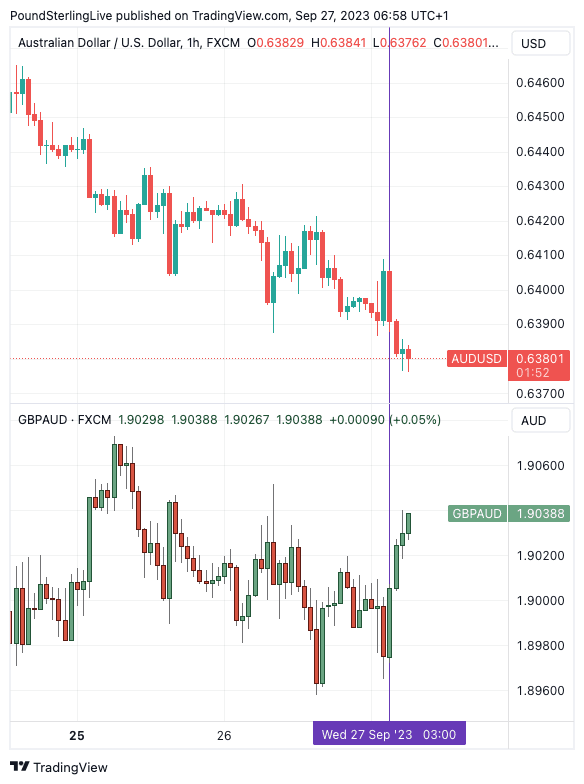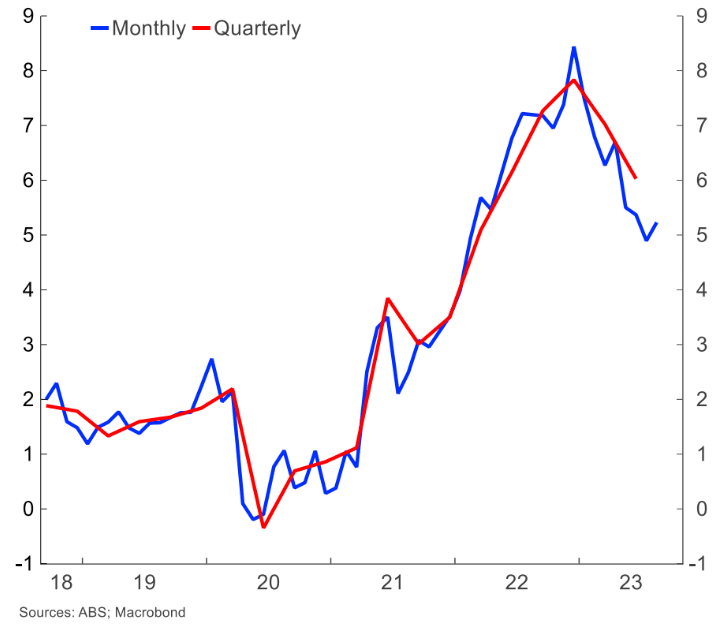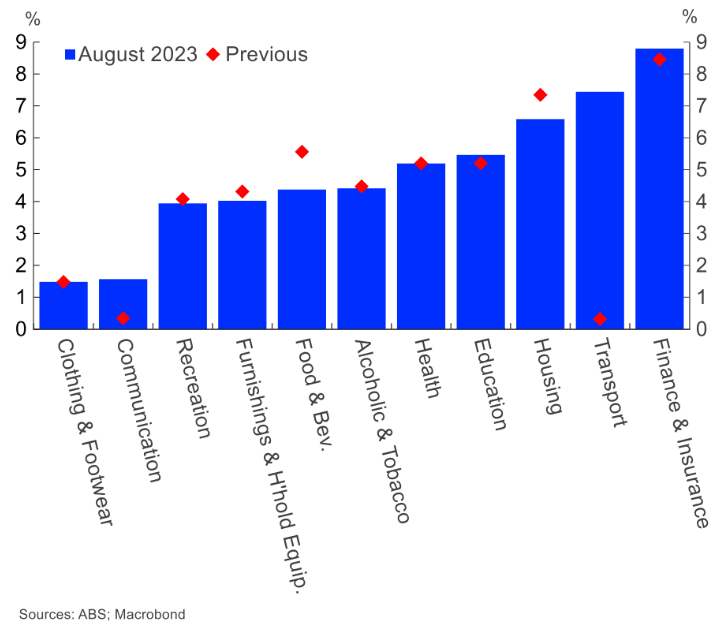Australian Dollar Fades as Monthly Inflation Print Hints at RBA Staying on Hold
- Written by: Sam Coventry
-

Image © Adobe Images
The odds of another Reserve Bank of Australia (RBA) interest rate increase taking place next week were lowered following the release of inflation data offered no nasty surprises.
The Australian Dollar fell against the Pound and U.S. Dollar in the minutes following the release of Australia's weighted mean inflation which gives a monthly snapshot of price dynamics that allows markets to get a sense of where the more complete quarterly figure will land.
The headline was a 5.2% uptick in the year to August - up from 4.9% in July, and a 0.8% increase on the month owing largely to the rise in global energy prices.
"The rebound in annual inflation in August was entirely expected. As we wrote when the July CPI indicator was released, we expect August inflation with a 5 handle again given the sharp increase in petrol and diesel prices," says Stephen Wu, an economist at Commonwealth Bank.
Above: AUD/USD (top) and GBP/AUD at one-hour intervals with the timing of the inflation release shown.
"The reacceleration in headline inflation was largely driven by a rise in petrol costs as the Aussie dollar remained under pressure and the price of oil firmed," says Jameson Coombs, Economist at St.George Economics.
The RBA will have been pleased to note the core measures of inflation - which we get when stripping out volatile global inputs such as food and fuel - continued to fall.
And that is the crux of the matter for the Australian Dollar which fell some 0.35% against Sterling in the hours following the release. The Pound to Australian Dollar exchange rate rose from lows near 1.8972 to 1.9033 at the time of writing, in the process defending a support line near 1.90.
The Australian Dollar to U.S. Dollar exchange rate fell nearly half a per cent from 0.6405 to 0.6376.
"AUD/USD eased below 0.6380, the lowest in about two weeks," says Carol Kong, a foreign exchange strategist at Commonwealth Bank. "AUD/USD is now less than 30 pips above the year-to-date low of 0.6357. If AUD/USD falls below 0.6357, it may quickly lose another cent or two. Weak risk sentiment weighed on AUD/USD."
Above: Consumer price index, headline, annual % change. Image courtesy of St. George Bank.
Commonwealth expects the RBA to maintain the cash rate at 4.1% with the inflation data giving little reason to expect the hiking cycle to be rebooted, thus depriving the Aussie Dollar of the support of rising rate expectations.
Of interest to the RBA will be that the ABS noted that the rate of inflation for housing, at 6.6%n y/y, was lower than it was in July (7.3%). New dwelling prices are up 4.8% y/y, the lowest annual pace since August 2021, as price increases for building materials continued to ease, reflecting improved supply conditions.
"The larger surprise for us was housing, which rose just 0.1% vs our forecast of 0.7% due to softer than expected rents," says Justin Smirk, Senior Economist at Westpac. It is noted too that dwelling purchase costs were softer than expected at 0.1% vs. 0.5% forecast, while electricity prices fell (–1.3%) due to the impact of government rebates.
Above: Components of consumer price index, headline, annual % change. Shows impact of rising fuel prices on transport costs. Image courtesy of St. George Bank.














